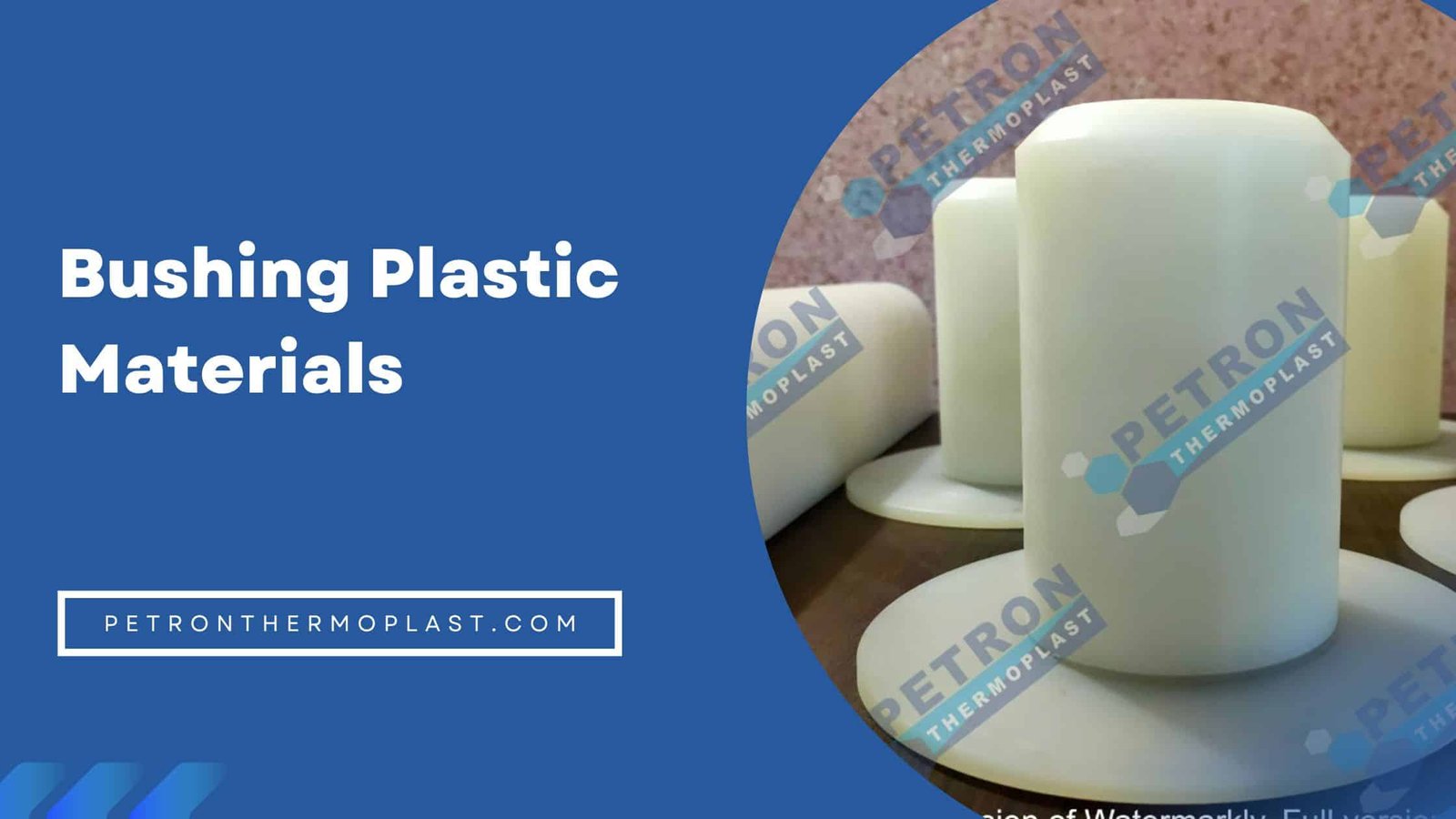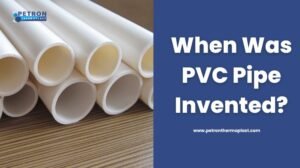Metals have proven their worth over time and have long been enough to manufacture machined components or equipment such as bushings and bearings. They do, however, have some shortcomings. Despite their incredible strength, metals are more prone to corrosion, dust, and dirt than their bushing plastic counterparts. They also necessitate external lubrication because their coefficient of friction is insufficient and tends to increase with wear. Plastics, unlike metals, have an extremely low and safe coefficient of friction.

Plastic bushings:
Metal bushings were the only alternative for industrial use for many years. Today’s plastic manufacturing technology allows for the creation of composite plastics that can be used as an alternative to metal construction material for bushings.
The characteristics of plastic bushing:
- Low wear rates are among the key characteristics of reinforced plastic bushings.
- Lightweight material.
- The coefficient of friction is low. It can withstand heavy loads.
- Conformability under load
- With excellent performance ratings, it has the potential to be comparable to other sleeve-bearing materials.
- OD compatibility with conventional sintered bronze sizes, allowing for easy upgrades.
What are the benefits of using plastic bushing materials?
Greater polymers are now regarded as highly specialized, cutting-edge materials better suited to their environment than their metal predecessors, thanks to technological advances. The primary benefits of plastic bushings are listed below.
- High-stress tolerance, elasticity, and flexibility
- The ability to self-lubricate eliminates the need for external lubricants.
- Noise reduction, excellent impact absorption,
- Because of their low coefficient of friction, they have excellent wear resistance.
- Unrivalled lightness,
- Superior service life and lower maintenance requirements.
Applications require plastics:
Below are the applications that require high-performance plastics include.
- Metals are frequently corroded, resulting in rapid deterioration and loss of key properties. Corrosion also raises the coefficient of friction, which causes premature wear. On the other hand, high-performance plastics are designed to resist harsh environments. The following applications can benefit from their use.
- Grease and lubricants are rarely used in food environments because they raise the risk of leakage. Self-lubricating performance plastics, fortunately, eliminate the need for outer lubrication.
- Efficient plastics are also a good choice for applications with high friction because they enhance fluidity and reduce maintenance frequency. Furthermore, even when subjected to wear, the coefficient of friction of plastics remains constant, making them preferable to metals. In such cases, a polymer with naturally enriched resin with oil or wax is often the best solution since its self-lubricating characteristics eliminate the need for grease or oil.
- Bushing plastic is best suited to highly humid conditions because they do not worsen when exposed to water or moisture. Plastics never rust or degrade prematurely due to their exceptional chemical resistance.
- Because of their excellent elasticity, plastics can absorb repercussions and regain shape. Polymer materials also reduce vibrations.
- Plastic bushings and bearings are a great solution for application fields that generate a lot of noise because they are much quieter than their metal counterparts.
- Polymers are also a better choice for conditions where dust and particles tend to damage or reduce the efficiency of bearings.
Selecting the best plastic:
-
Nylon:
Nylons are a type of plastic with fascinating mechanical characteristics such as low friction and high abrasion resistance. As a result, they are ideal for applications requiring high speeds and elevated amounts of friction. They are, however, less appropriate for humid or wet surroundings due to their higher moisture absorption rate than other performance plastics. Acetal is a better choice for surroundings with wide moisture variations.
-
PTFE (Teflon):
PTFE is a tough plastic with a low coefficient of friction, making it highly slippery. It has a high thermal resistance, retaining mechanical properties even at temperatures ranging from -400 °F to 500 °F. PTFE bushings are a long and strong choice for demanding applications.
-
Acetal:
In terms of mechanical properties, acetal is comparable to plastics from the nylon family. However, it is harder and stiffer. Acetal is also known for its low moisture absorption rate, making it an excellent material for water applications.
Why do plastic bushings perform better than metal bushings?
Composite plastic bushings are made up of thermoplastic alloys, solid lubricants, and a fibre matrix for reinforcement. They are made from various low-cost plastics (such as nylon, UHMW, polyethene, and Teflon) and high-performance plastics (such as Vespel, PEEK, and Torlon) for applications requiring higher temperatures or higher loads.
Many reinforced plastics used to make bushings are less expensive than comparable metals. In some cases, they can be up to 25% less expensive. Despite their lower overall cost and lightweight material weight, composite plastic bushings frequently outperform metal bushings in a variety of ways, including:
- Running for longer periods in extreme conditions and operating parameters.
- Running without any lubricant.
- Creating less friction.
- Having increased durability and longevity. Superior corrosion resistance is demonstrated.

Plastic bushings have the following advantages:
As previously stated, composite plastic bushings frequently outperform metal bushings. Other benefits of using composite plastic bushings instead of metal bushings include:
- Composites meet specific engineering requirements: Plastic bushings are chemically resistant, can withstand temperatures up to +482°F, and require no lubrication or maintenance. They are inexpensive, have a long service life, can handle heavy loads, can be used in wet areas, are FDA approved, and have numerous other advantages.
- There is little to no upkeep required: Plastic bushings are self-lubricating, eliminating the need for manual lubrication application and re-application. The lack of lubrication also allows for better resistance to debris and other pollutants, lowering the likelihood of plastic bushings seizing up.
- Reduced equipment costs: Plastic bushings are extremely durable because of their lower friction coefficient and greater wear resistance. Switching from metal to plastic can save professionals up to 25% in costs because they last longer and cost less.
- Lubrication: It is unnecessary because plastic bushings are self-lubricated and do not stimulate the dust and dirt that cluttered grease or oil does.
- Higher resistance to corrosion: Unlike metal bushings, plastic bushings are not affected by water, salt, or other chemicals. Similarly, industry people can lubricate plastic bushings with water, unlike metal bushings.
Petron Thermoplast always provides the best quality plastic products. We offer our bushing components items at an affordable cost. You can use our bushing plastic items for several industrial applications.





Pingback: คลินิกปลูกผม
Pingback: Pixio
Pingback: fuck
Pingback: phim vien tuong
Pingback: free strip chat tokens
Pingback: Huc99 เครดิตฟรี 50
Pingback: บาคาร่า ufa11k